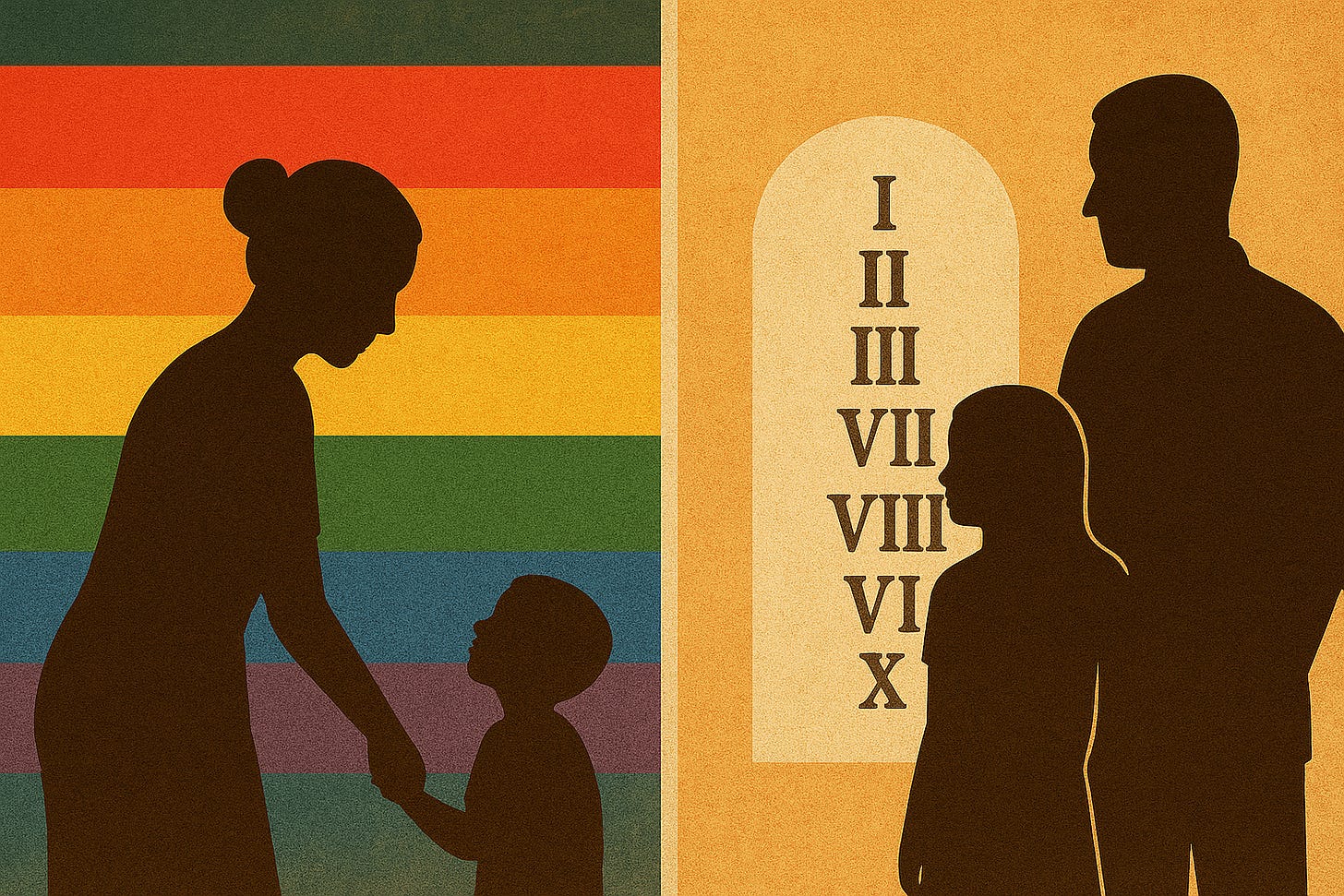SIDEBAR: Will the First Amendment Work Both Ways?
What Mahmoud v. Taylor Could Mean for Culture War Opt-Outs
SIDEBAR is my occasional op-ed series on unfolding constitutional controversies. These pieces step outside the usual analysis to weigh in on the news of the moment.
Any day now, the Supreme Court will issue its ruling in Mahmoud v. Taylor, a case that could reshape how parental rights interact with the First Amendment. At issue is whether public schools must allow religious parents to opt their children out of reading LGBTQ-inclusive storybooks. The case raises difficult questions about religious liberty, public education, and the limits of pluralism in a shared civic space.
A recent post from ReligiousLiberty.tv offers a provocative framing: if the Court recognizes a constitutional right for religious families to avoid exposure to secular moral messages, then that same principle should protect non-Christian or secular families who object to state-sponsored religious messaging—such as the Ten Commandments displays now mandated in public classrooms by states like Louisiana and Texas.
The symmetry is striking. In Mahmoud, religious parents object to what they see as the state imposing values contrary to their faith. In the Ten Commandments cases, nonreligious or religious minority parents make the same objection in reverse. If exposure to contested values can trigger constitutional protection in one setting, why not in the other?
What the Argument Gets Right
The analogy identifies a genuine tension in the Court’s First Amendment jurisprudence. Both scenarios involve families who want to shield their children from government messaging they believe undermines their core beliefs. Both occur in the setting of compulsory public education. And both involve a state refusal to accommodate.
During oral argument in Mahmoud, some justices questioned why the school district didn’t offer even minimal accommodation—especially for young children in lower grades. Others pressed on how the curriculum was selected, whether it truly counted as instruction, and whether it burdened religious exercise at all. While the justices didn’t signal a clear outcome, the questions suggest an interest in the boundaries of exposure, compulsion, and parental authority.
This is where the ReligiousLiberty.tv argument becomes strategically significant. It calls for consistency: if conservative Christian parents are entitled to exemptions from diversity-related curricula, then Muslim, Jewish, atheist, and secular parents must be equally protected from state-sponsored religious instruction. It dares both sides of the culture war to apply their constitutional principles evenhandedly.
Why the Symmetry May Not Hold
Yet the analogy, as useful as it is for surfacing underlying tensions, may not carry doctrinally. Mahmoud is a Free Exercise Clause case. The parents argue that forced exposure to LGBTQ-themed books burdens their religious practice. The Ten Commandments disputes, by contrast, are litigated under the Establishment Clause—focused on whether the state is impermissibly endorsing religion.
These are doctrinally distinct pathways. Courts have long been reluctant to blend them, even when the real-world effects on students and families feel similar.
There’s also the matter of how burden is defined. A key question in Mahmoud is whether mere exposure to ideas contrary to one’s religious beliefs—without compulsion to affirm, participate, or act—is constitutionally significant. The Fourth Circuit said no, and during oral argument, several justices expressed concern about the implications of recognizing such a right. If the Court affirms, it will reaffirm a longstanding principle: exposure alone does not amount to a Free Exercise violation.
But even if the Court rules in favor of the parents, it may do so on narrow grounds: perhaps based on the age of the children, the nature of the content, or the state’s refusal to notify or accommodate. That kind of ruling might not create a broad parental opt-out right—nor one that applies equally across ideological lines.
And history offers little reassurance that the principle, if recognized, will be enforced symmetrically. Religious minorities and non-Christian families have often struggled to win Establishment Clause cases, especially in recent years. A new opt-out right could be read narrowly or applied selectively, reinforcing asymmetries rather than resolving them.
The Deeper Question
Still, the ReligiousLiberty.tv argument poses a challenge worth sitting with. If we are to take seriously the idea that parents should have some constitutional protection against the ideological messaging of the state, that protection must apply equally—regardless of who is making the claim or which values are in dispute.
If Mahmoud becomes a vehicle for expanding parental rights, then those rights must be shared. If conscience matters, it must matter across the board. Otherwise, what’s being advanced isn’t constitutional principle—it’s political preference dressed in constitutional language.
The First Amendment was not designed to pick sides in the culture wars. It was meant to hold space for pluralism. Mahmoud v. Taylor will test whether we still believe that.


